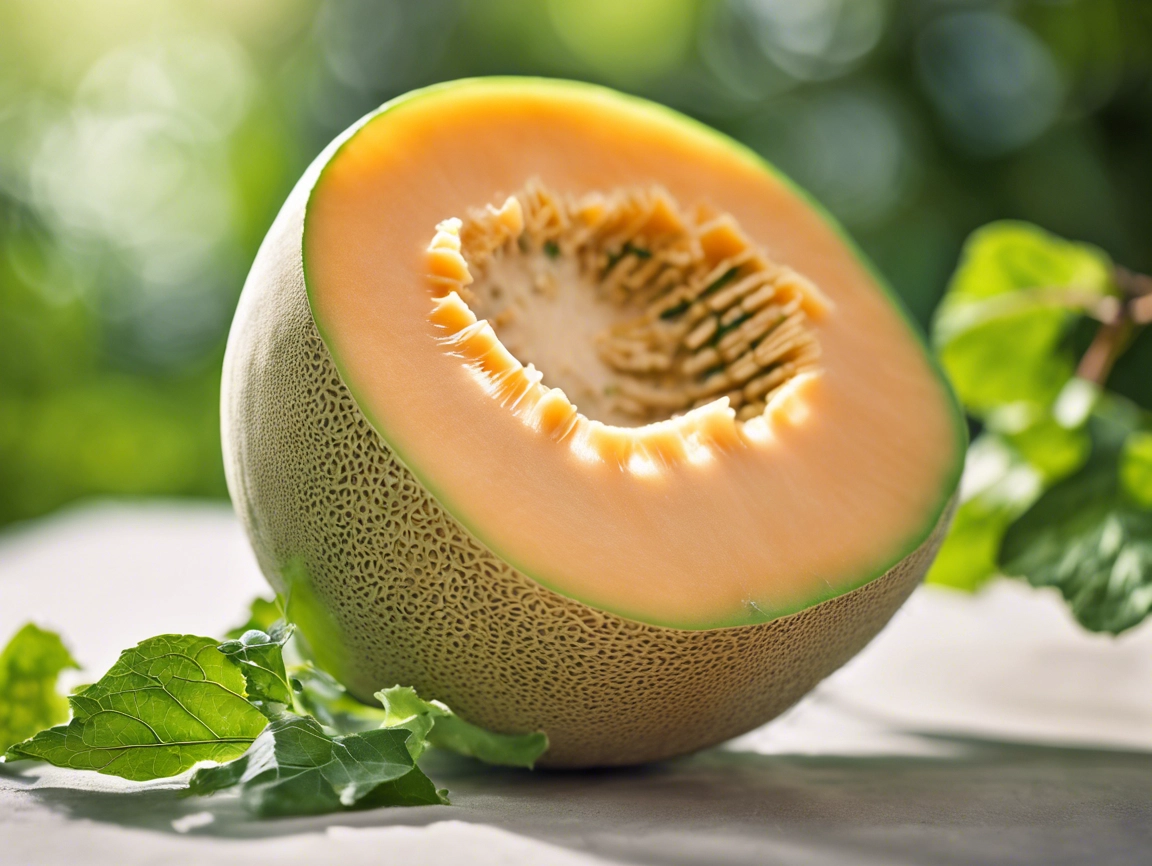Are you craving the juicy sweetness of a perfectly ripe cantaloupe, but don’t know where to start? Whether you’re a green thumb wannabe or a seasoned garden guru, this guide is your ticket to growing your own backyard bounty of delicious cantaloupes. Follow these simple steps, from selecting the right varieties to savoring the fruits of your labor, and soon you’ll be enjoying the freshest cantaloupes you’ve ever tasted. Let’s dive in and learn how to grow cantaloupes in your garden!
This post may contain affiliate links, as an Amazon Associate I earn from qualifying purchases, this is at no extra cost to you
Selecting the Right Cantaloupe Varieties
When it comes to growing cantaloupes in your backyard, selecting the right varieties is a crucial first step. Different cantaloupe varieties have unique flavors, textures, and growing requirements. Some popular options include Ambrosia, Sugar Cube, and Best Jumbo. Before you start planting, consider factors such as your location, climate, and personal preferences to choose the best variety for your garden. Now, let’s dive into preparing the soil and planting the seeds for a successful cantaloupe harvest.
Preparing the Soil and Planting the Seeds
Once you have selected the right cantaloupe varieties for your backyard garden, the next step is to prepare the soil and plant the seeds. Cantaloupes thrive in well-drained, fertile soil with plenty of organic matter. Before planting, amend your soil with compost or well-rotted manure to ensure proper nutrition for your plants. When the soil is ready, create mounds or hills to help with drainage and warming of the soil. Plant the cantaloupe seeds about an inch deep and space them at least 18 inches apart. Once your seeds are planted, water them thoroughly and keep the soil consistently moist until germination occurs. With proper soil preparation and planting techniques, you will be on your way to a successful cantaloupe harvest.
Grow Cantaloupes: Start Your Seeds Indoors
If you live in a cooler climate, start your seeds indoors 4-6 weeks before the last frost. Use a heat mat to ensure the soil is nice and warm, cantaloupes thrive best in warm soil and will germinate at a faster rate. Keep the soil moist but not soggy. Be sure to harden your plants off prior to transplanting in the ground.

Grow Cantaloupes: Caring for Your Cantaloupe Plants
After your cantaloupe seeds have germinated and your plants have started to grow, it’s important to provide the proper care to ensure a successful harvest. Cantaloupe plants require consistent watering, especially during hot and dry periods. Cantaloupes need about 2 gallons of water per week. Be sure to water at the base of the plants to avoid wetting the leaves, which can lead to disease. Additionally, mulching around the base of your cantaloupe plants can help retain moisture in the soil and prevent weeds from growing.
As your cantaloupe plants begin to vine, provide support such as trellises or cages to keep the fruit off the ground and reduce the risk of rot. Regularly check for pests and diseases, such as aphids or powdery mildew, and take action promptly to prevent any damage to your plants. You can apply neem oil to help ward off unwanted pests.
By caring for your cantaloupe plants throughout the growing season, you set yourself up for a bountiful harvest of delicious fruit. So, let’s dive into the next step: harvesting and enjoying your homegrown cantaloupes.
Grow Cantaloupes: Harvesting and Enjoying Your Homegrown Cantaloupes
Once your cantaloupes reach their full ripeness, it’s time to harvest and enjoy the fruits of your labor. A ripe cantaloupe will have a sweet, fragrant aroma, and the stem near the fruit should easily detach when gently pulled. Use a sharp knife or garden shears to cut the fruit from the vine, leaving a few inches of stem attached to prolong its shelf life. If the melon is difficult to remove, it may need more time to ripen. A melon that has fallen off the vine on its own is likely over ripe.
After harvesting, it’s best to store your cantaloupes in a cool, dry place to maintain their freshness. If you’re not ready to eat them right away, refrigerate the whole fruit for up to a week or cut it into slices and store it in an airtight container for a few days. Remember, the flavor of freshly picked cantaloupes is unmatched, so try to enjoy them as soon as possible for the best taste experience.

How to Grow Cantaloupes
In just a few simple steps, you can go from seed to slice with your very own backyard-grown cantaloupes. By selecting the right varieties, preparing the soil, caring for your plants, and finally harvesting your sweet bounty, you’ll soon be relishing the taste of success. So why wait? Start your cantaloupe growing journey today and watch as your hard work pays off in the most delicious way possible. Remember, the sweetest rewards come to those who sow with love and care. Happy gardening!
Enjoy this post? Check out these articles:
DIY Miracle Grow: The Ultimate Gardening Hack You Need to Try!

5 Surprising Hacks to Eliminate Animal Urine Smell from Your Carpet





From Seed to Slice: A Foolproof Guide to Growing Cantaloupes in Your Backyard
Share this:
- Click to share on Facebook (Opens in new window) Facebook
- Click to email a link to a friend (Opens in new window) Email
- Click to share on Reddit (Opens in new window) Reddit
- Click to share on Tumblr (Opens in new window) Tumblr
- Click to share on Pinterest (Opens in new window) Pinterest
- Click to share on WhatsApp (Opens in new window) WhatsApp
